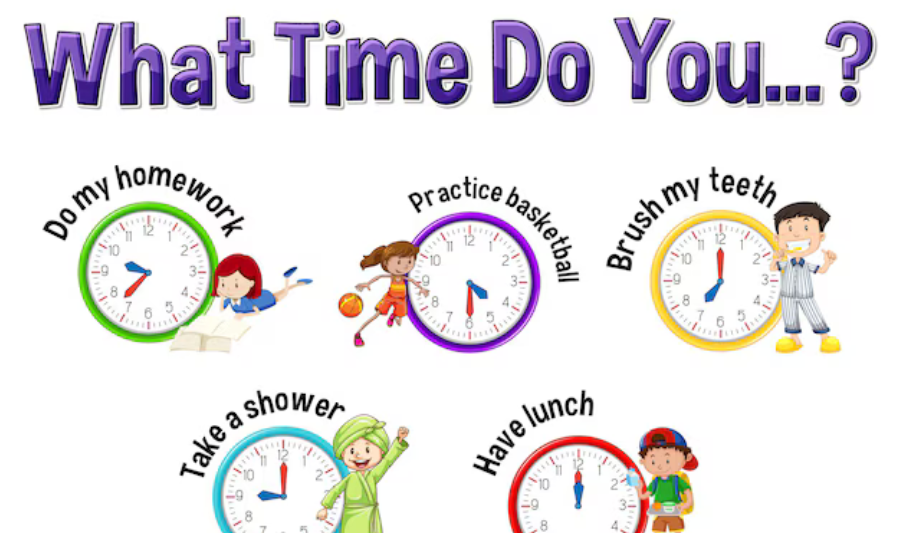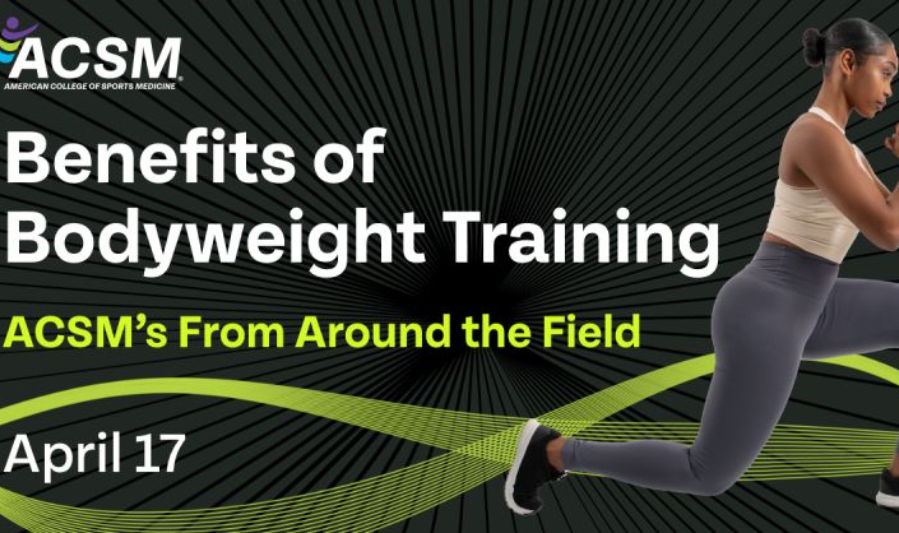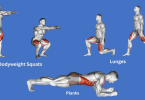Introduction
The Importance of Staying Active Without Gym Equipment
Staying active is one of the best ways to improve both your physical and mental well-being — and the great thing is, you don’t need a gym membership or expensive equipment to do it. With just your bodyweight and a little space, you can perform effective workouts that build strength, endurance, and flexibility. Exercising at home removes barriers like time, cost, or travel, making fitness accessible to everyone.
Who This Routine Is For

Beginners
If you’re new to fitness, this routine provides a simple and approachable way to start. The exercises are easy to follow, safe, and can be modified as you progress.
Busy Professionals
For those juggling tight schedules, these workouts offer maximum results in minimal time. You can complete them during a break, before work, or at the end of the day — no commute or equipment required.
Home Workout Enthusiasts
If you prefer the comfort and privacy of your own space, bodyweight training is perfect. You can exercise anytime, anywhere — whether that’s your living room, backyard, or even while traveling.
Benefits of Bodyweight Exercises

Build Strength and Endurance
Bodyweight workouts use your own resistance to challenge muscles, helping you tone up and get stronger without weights.
Improve Flexibility and Balance
Many exercises engage stabilizing muscles, improving coordination, mobility, and body control.
Boost Mental Health
Regular movement reduces stress, increases energy, and enhances mood — leading to a healthier and more positive mindset.
Functional Fitness for Everyday Life
These exercises train your body to perform daily movements more efficiently, making everyday activities easier and safer.
Benefits of a No-Equipment Workout
Full-Body Workout Using Just Your Body Weight
Bodyweight exercises engage multiple muscle groups at once, giving you a complete full-body workout without the need for weights or machines. Movements like push-ups, squats, and planks help tone your arms, core, legs, and back — all while improving coordination and balance.
Can Be Done Anywhere, Anytime
One of the greatest advantages of a no-equipment routine is flexibility. Whether you’re at home, in the office, or outdoors, you can perform these exercises anytime that fits your schedule. No gym, no problem — your body becomes your portable workout tool.
Improves Strength, Flexibility, and Endurance
Bodyweight workouts are highly effective for building muscular strength while enhancing flexibility and stamina. They help you move better, feel more energetic, and perform everyday activities with greater ease.
Saves Money and Time
With no need for gym memberships or expensive equipment, you save money while still achieving your fitness goals. Plus, quick bodyweight workouts can fit into even the busiest days — eliminating the time spent commuting to a gym.
Helps Establish Consistent Fitness Habits
Because these workouts are simple, accessible, and easy to maintain, they help you stay consistent — the key to long-term fitness success. Regular movement builds discipline, boosts motivation, and turns exercise into a sustainable lifestyle habit.
How to Get Started
Choose a Comfortable Space at Home or Outdoors
Find a spot with enough room to move freely — whether it’s your living room, backyard, or a quiet area in the park. Make sure the surface is flat and free from obstacles so you can perform exercises safely and comfortably.
Wear Proper Workout Clothes and Shoes
Dress in lightweight, breathable clothing that allows you to move easily. Supportive athletic shoes are ideal for stability and to help prevent injury, especially during movements that involve jumping or quick transitions.
Use a Mat for Floor Exercises if Needed
A yoga or exercise mat adds cushioning for your knees, wrists, and back during floor-based moves like planks, sit-ups, or stretches. It’s optional, but it can make your workout much more comfortable.
Track Your Progress
Keeping track of your fitness journey helps you stay motivated and consistent. You can use a journal, mobile app, or even progress photos to record your workouts, note improvements, and
Warm-Up Routine (5–10 Minutes)
The Importance of Warming Up
Before diving into your workout, it’s essential to prepare your body with a proper warm-up. Warming up helps increase blood flow, loosen joints, and activate muscles, which reduces the risk of injury and improves performance. A few minutes of light movement also helps your mind transition into workout mode, boosting focus and motivation.
Simple Warm-Up Exercises
Jumping Jacks
A classic full-body move that raises your heart rate and gets your blood flowing. Perform for 30–60 seconds to start warming up your entire body.
Arm Circles
Stand tall and make small to medium circles with your arms extended to the sides. This loosens the shoulders and prepares the upper body for movement.
High Knees
Jog in place while lifting your knees toward your chest. This exercise activates your core and leg muscles while increasing heart rate and coordination.
Leg Swings
Hold onto a wall or sturdy surface for balance and swing one leg forward and backward in a controlled motion. Repeat on each leg to improve hip mobility and flexibility.
Easy Full-Body Workout Routine (20–30 Minutes)
Overview
This full-body routine targets all major muscle groups using only your body weight. It can be done at home or anywhere with enough space to move. Perform each exercise for 30–60 seconds, rest for 15–30 seconds between moves, and repeat the circuit 2–3 times for a complete workout.
1. Squats
Squats strengthen your legs, glutes, and core while improving overall balance and mobility.
How to Do It:
Stand with feet shoulder-width apart, lower your hips back and down as if sitting into a chair, then push through your heels to return to standing.
Beginner Tip: Use a chair behind you for guidance or limit your range of motion.
Advanced Variation: Try jump squats for added intensity.
2. Push-Ups (and Modifications)
Push-ups build strength in your chest, shoulders, triceps, and core.
How to Do It:
Start in a high plank position with hands slightly wider than shoulders. Lower your chest toward the floor, then push back up to the starting position.
Beginner Tip: Perform push-ups on your knees or against a wall.
Advanced Variation: Try decline push-ups (feet elevated) or diamond push-ups for a greater challenge.
3. Lunges
Lunges tone your legs, glutes, and core while improving balance and coordination.
How to Do It:
Step forward with one leg, lowering your back knee toward the floor while keeping your front knee over your ankle. Push through your front heel to return to standing and switch legs.
Beginner Tip: Use a wall or chair for balance.
Advanced Variation: Try walking lunges or jumping lunges for extra intensity.
4. Plank
Planks strengthen your core, shoulders, and back while improving posture and stability.
How to Do It:
Hold your body in a straight line from head to heels, resting on your forearms or hands. Engage your core and avoid sagging your hips.
Beginner Tip: Hold for shorter intervals (15–20 seconds) and build up gradually.
Advanced Variation: Try side planks or shoulder tap planks.
5. Glute Bridges
Glute bridges activate your glutes, hamstrings, and lower back.
How to Do It:
Lie on your back with knees bent and feet flat on the floor. Lift your hips toward the ceiling, squeezing your glutes at the top, then lower back down slowly.
Beginner Tip: Keep the motion slow and controlled.
Advanced Variation: Try single-leg glute bridges for added challenge.
6. Mountain Climbers
A great full-body move that builds endurance and raises your heart rate.
How to Do It:
Start in a plank position and alternate driving your knees toward your chest in a quick, running motion.
Beginner Tip: Move at a slower pace until you’re comfortable.
Advanced Variation: Add a push-up between sets or increase your speed for a cardio burst.
Cool Down & Stretching (5–10 Minutes)
The Importance of Stretching
After finishing your workout, it’s important to take time to cool down and stretch. This helps your muscles recover, reduce stiffness, and improve flexibility. Stretching also lowers your heart rate gradually and promotes relaxation — a perfect way to end your routine and prevent post-workout soreness.
Recommended Cool-Down Stretches
Hamstring Stretch
Sit on the floor with one leg extended and the other bent inward. Reach toward your toes on the extended leg, keeping your back straight. Hold for 20–30 seconds, then switch sides.
This stretch targets the back of your thighs and improves flexibility in your lower body.
Shoulder Stretch
Bring one arm across your chest and gently pull it closer with your opposite hand. Hold for 20–30 seconds per side.
This helps release tension in the shoulders and upper back, especially after push-ups or planks.
Cat-Cow Stretch
Start on your hands and knees. Inhale as you arch your back and lift your head (Cow Pose), then exhale as you round your spine and tuck your chin (Cat Pose). Repeat slowly for 30–60 seconds.
This stretch improves spine mobility and relieves tension in the back.
Deep Breathing
End your session with slow, deep breaths. Inhale through your nose for four counts, hold for two, and exhale through your mouth for four. Repeat several times.
Deep breathing calms the mind, promotes recovery, and brings your body back to a resting state.
you may also like to read these posts:
Discover the Beauty of Indonesian Traditional Fashion Styles
Learn Java Easily Online with Simple Coding Examples
Easy Core Java Tutorials for Beginners to Start Coding
Beginner-Friendly Home Workouts: Simple Routines to Get Started
Weekly Schedule & Progression
Recommended Frequency (3–5 Days per Week)
For best results, aim to complete this workout routine 3–5 times per week, depending on your fitness level and schedule. Beginners can start with three days to allow time for recovery, while more experienced individuals can increase to five days for greater consistency and progress.
Example Split:
- Monday: Full-body workout
- Tuesday: Rest or light activity
- Wednesday: Full-body workout
- Thursday: Active recovery (stretching or walking)
- Friday: Full-body workout
- Weekend: Rest or optional light workout
Gradually Increase Reps, Sets, or Duration
Progress is key to building strength and endurance over time. As your fitness improves, challenge yourself by:
- Adding extra repetitions to each exercise
- Completing an additional set
- Extending your workout duration (e.g., from 20 to 30 minutes)
- Reducing rest time between exercises
Small, steady increases help you continue improving without overtraining.
Optional Variations and Intensity Boosters
To keep your workouts engaging and prevent plateaus, mix in new variations or intensity boosters:
- Incorporate tempo training (slower movements for more control)
- Add plyometric moves like jump squats or burpees
- Combine exercises into circuits or supersets for higher intensity
- Use household items (like water bottles or backpacks) for extra resistance
These small tweaks make your body adapt, keeping your workouts challenging and effective.
Rest and Active Recovery Days
Rest is just as important as training. Schedule 1–2 rest days per week to allow your muscles to repair and grow stronger. On these days, light movement such as stretching, yoga, or walking can enhance recovery and maintain flexibility.
Remember — consistency and recovery go hand in hand. Listening to your body ensures long-term progress and prevents burnout or injury.
Nutrition Tips
The Importance of a Balanced Diet for Energy and Recovery
A balanced diet fuels your workouts and supports muscle recovery afterward. Proper nutrition ensures your body gets the right mix of carbohydrates for energy, protein for muscle repair, and healthy fats for overall function. When paired with regular exercise, good eating habits can help you feel stronger, recover faster, and maintain consistent progress.
Pre-Workout Meals
Eating before a workout gives your body the energy it needs to perform at its best. Aim for a light meal or snack 30–60 minutes before exercise that includes complex carbs and a small amount of protein.
Examples:
- Banana with peanut butter
- Greek yogurt with berries
- Whole-grain toast with almond butter
- Oatmeal with fruit
Avoid heavy or greasy foods before training, as they can slow digestion and make you feel sluggish.
Post-Workout Meals
After your workout, focus on refueling and rebuilding. A meal or snack with both protein and carbohydrates within an hour of finishing helps repair muscles and restore energy levels.
Examples:
- Protein smoothie with fruit and milk (or a plant-based alternative)
- Grilled chicken with brown rice and vegetables
- Scrambled eggs with whole-grain toast
- Cottage cheese with pineapple
Hydration Tips
Staying hydrated is key for energy, focus, and muscle function. Aim to drink water throughout the day — not just during your workout.
Quick Tips:
- Drink a glass of water 30 minutes before exercising
- Sip water during your workout to stay hydrated
- Replenish fluids after exercise, especially if you sweat heavily
- Add a pinch of salt or electrolytes after intense sessions to restore balance
Simple Snack Ideas
Healthy snacks keep your energy steady between meals and prevent overeating later in the day.
Smart Options:
- Apple slices with nut butter
- Handful of mixed nuts or trail mix
- Hummus with carrot or cucumber sticks
- Protein bar or boiled eggs
- Rice cakes with avocado
Common Mistakes to Avoid
Skipping Warm-Up or Cool-Down
Many people rush straight into their workout or skip the cool-down afterward — but both are essential for performance and injury prevention.
- Warm-ups prepare your muscles, joints, and cardiovascular system for exercise.
- Cool-downs help your body recover, reduce soreness, and promote flexibility.
Always dedicate 5–10 minutes before and after your session to movement and stretching.
Performing Exercises with Poor For
Proper form ensures you’re working the right muscles and avoiding strain or injury. Rushing through movements or copying others without understanding technique can lead to setbacks.
- Focus on slow, controlled movements.
- Keep your core engaged and maintain good posture.
- If unsure, watch a trusted video guide or consult a trainer to check your form.
Quality always matters more than quantity.
Overtraining Without Rest
Working out every day without recovery can cause fatigue, muscle soreness, and even injury. Remember — rest is when your body rebuilds and gets stronger.
- Schedule 1–2 rest days each week.
- Get adequate sleep to support recovery.
- Listen to your body; take a break if you feel exhausted or sore.
Consistency is key, but balance keeps you progressing safely.
Ignoring Nutrition and Hydration
Exercise alone isn’t enough — your body needs the right fuel to perform and recover. Skipping meals, eating poorly, or not drinking enough water can reduce energy, delay recovery, and hinder results.
- Eat a balanced diet rich in lean protein, whole grains, fruits, and vegetables.
- Stay hydrated before, during, and after workouts.
- Avoid excessive processed foods or sugary drinks.
Think of food as fuel — it powers your performance and progress.
Motivation and Consistency
Setting Small, Achievable Goals
Staying motivated begins with setting clear, realistic goals. Instead of aiming for drastic changes overnight, focus on small, achievable milestones that build confidence and momentum.
- Start with goals like “work out three times this week” or “hold a plank for 30 seconds longer.”
- Gradually increase your challenges as you improve.
- Remember, progress over perfection — small steps add up to big results over time.
Every workout completed is a victory toward your long-term success.
Using Apps, Reminders, or Workout Partners
Accountability makes a huge difference in sticking with your fitness routine.
- Use fitness apps or calendar reminders to schedule your workouts and track consistency.
- Join online fitness communities or connect with a workout partner for encouragement and support.
- Having someone to share your progress or challenges with helps you stay committed — even on low-motivation days.
Accountability turns intentions into habits.
Tracking Progress and Celebrating Milestones
Seeing your progress — no matter how small — keeps you motivated and engaged.
- Record your workouts in a journal or app, noting improvements in reps, time, or endurance.
- Take progress photos every few weeks to visually track your transformation.
- Celebrate milestones like completing a month of consistent workouts or mastering a new exercise.
Acknowledging progress keeps you inspired and reinforces your dedication to a healthier lifestyle.
Faqs:
Can I really get fit with an easy workout routine without equipment?
Yes! Bodyweight exercises like squats, push-ups, planks, and lunges effectively build strength, burn fat, and improve endurance without the need for any equipment.
How many days a week should I do this workout?
For best results, aim for 4–5 days a week. This gives your muscles time to recover while maintaining consistency for better progress.
How long does this workout take each day?
You only need 20–30 minutes per session. That’s enough to work your whole body, especially when performed with proper form and minimal rest between exercises.
Is this routine suitable for beginners?
Absolutely! This easy workout routine without equipment is designed for beginners. You can start with fewer reps or sets and gradually increase intensity as your fitness level improves.
When will I start seeing results?
With regular workouts and a balanced diet, most people notice improved strength, flexibility, and energy levels within 2–3 weeks. Visible body changes usually appear after 4–6 weeks of consistency.
Conclusion
An easy workout routine without equipment is one of the most convenient and effective ways to stay fit, strong, and healthy—no gym required. With just a few simple bodyweight exercises, you can tone your muscles, boost your stamina, and improve your overall fitness anywhere, anytime. Remember, the key is consistency and proper form. Start small, stay dedicated, and you’ll see great results over time. Your fitness journey can begin today—right where you are!




